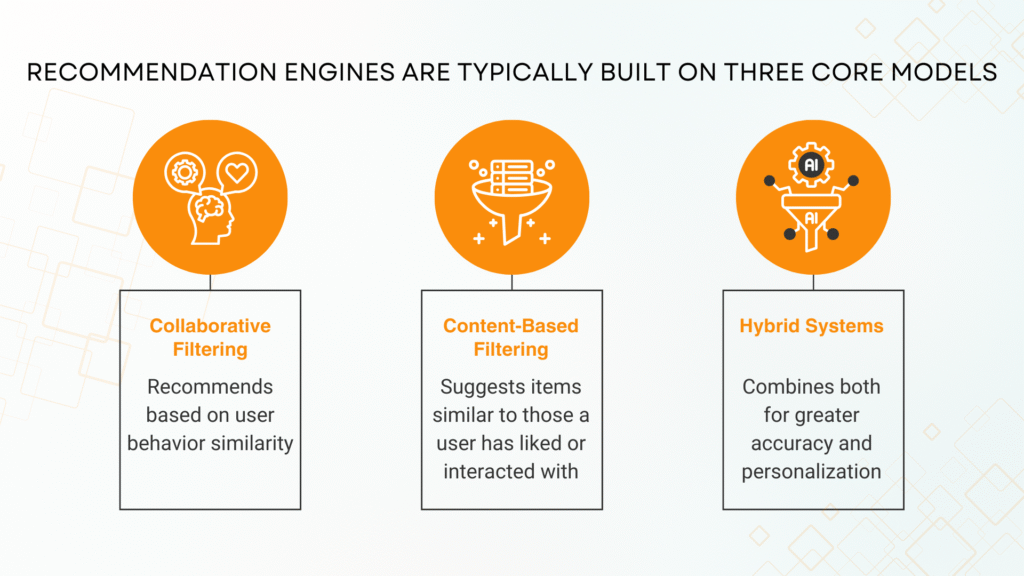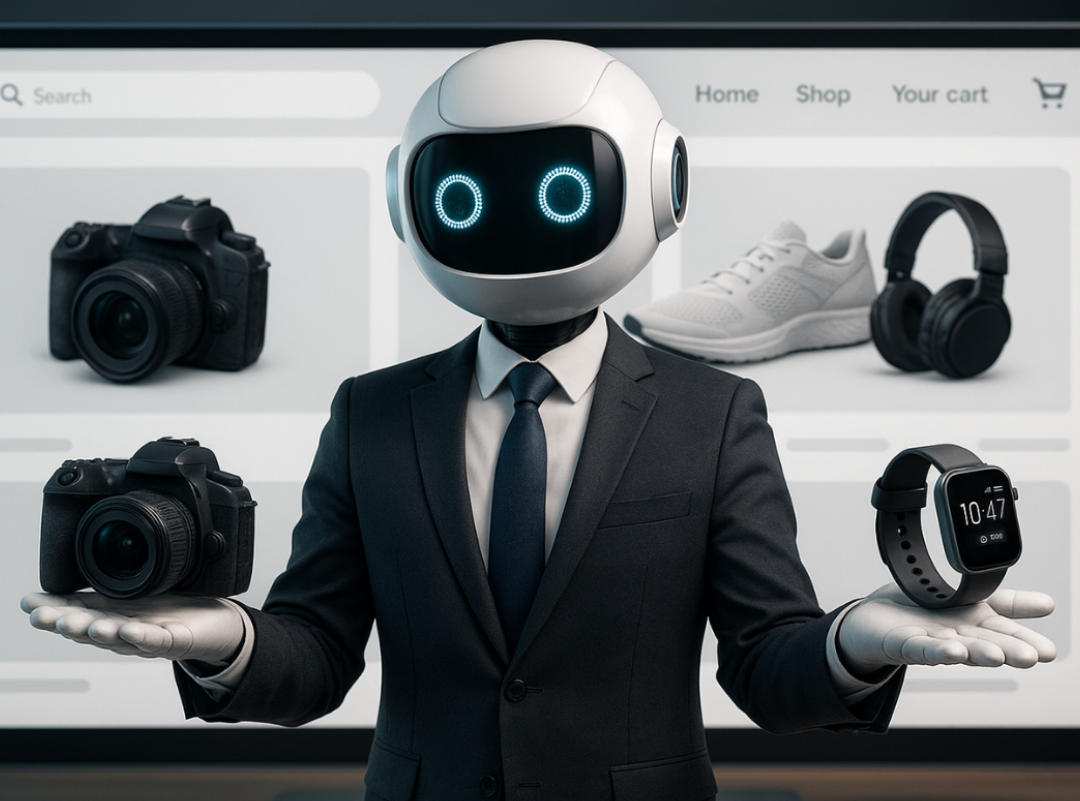As technology continues to evolve, staying ahead of the competition requires embracing cutting-edge innovations. One of the most impactful technologies reshaping app developments is...
Personalization isn’t just a trend; it’s the new digital expectation. With 71% of consumers expecting brands to deliver tailored experiences, businesses that fail to do so risk losing customer trust and engagement.
Enter the power of AI recommendation engines, intelligent systems that analyze behavior and data to predict what your customer wants next.
In this blog, we’ll explore how AI recommendation engines work, their use cases, and how businesses can leverage them to scale personalization and drive conversions.
What is an AI Recommendation Engine?
An AI recommendation engine uses machine learning and data analytics to suggest relevant content, products, or services to users. It learns from user behavior, preferences, and contextual data to personalize digital interactions.

Today, these engines are deeply integrated into intelligent apps—from e-commerce platforms to streaming services. As developers increasingly embed AI into mobile and web products, recommendation systems are becoming a core part of personalized app experiences. Learn more about this evolution in our blog on the Future of AI in App Development.
Why Businesses Can’t Ignore AI Recommendations
AI-powered personalization delivers results:
- 80% of Netflix views come from its recommendation engine
- 35% of Amazon purchases are driven by personalized suggestions
- AI-powered recommendations can increase conversions by up to 300% (McKinsey, e-commerce case studies)
- 10–15% rise in AOV (Average Order Value) using smart recommendations
These results are not limited to entertainment and e-commerce. In industries like fintech, healthcare, and education, AI systems are reshaping how content and services are delivered to users. According to a McKinsey report, companies that implement personalization strategies effectively can reduce acquisition costs by up to 50% and increase revenue by 5 to 15%.
Real-Life Use Cases
From curated playlists to smarter shopping carts, AI recommendation engines are everywhere:
- E-commerce: Product bundles based on past purchases and customer cohorts
- OTT Platforms: Watchlist suggestions built from view history and genre preferences
- Healthcare: Tailored wellness plans and medicine reminders based on medical history
- EdTech: Adaptive learning paths and suggested content based on student engagement
These applications are possible because of the massive datasets these industries generate. As discussed in our post on Big Data and IoT in Business Operations, access to real-time behavioural data is what powers the accuracy of these AI engines.
The Technology Behind the Scenes
AI recommendation systems are built on a powerful stack:
- Machine learning algorithms that adapt with every interaction
- Natural language processing (NLP) that understands user context
- Generative AI that doesn’t just predict preferences but also helps generate new content or combinations based on those preferences
This ability to synthesize and act on user behaviour at scale is what makes generative AI a game-changer for recommendation engines. If you’re exploring how Gen AI can boost the performance and intelligence of your digital product, our blog on Generative AI App Development offers a detailed breakdown.
Privacy, Ethics, and Trust
While personalization drives conversions, data protection remains critical. Ethical AI systems ensure:
- Consent-based data collection
- Transparent opt-in and opt-out controls
- Fairness in algorithmic decision-making
If your development involves managing customer data and protecting proprietary logic, it’s essential to follow best practices. Our insights on IP-Safe Product Development outline how to build scalable AI products while safeguarding both privacy and innovation.
How to Integrate AI Recommendation Engines
Here’s a practical path for integration:
- Define your goal – personalization for content, products, or user flows
- Choose the right algorithm – collaborative, content-based, or hybrid
- Feed clean, structured data into the model
- Monitor and A/B test recommendations for precision
- Retrain and optimize continuously
Looking to dive deeper into the technical aspects? This comprehensive academic survey on arXiv provides an excellent breakdown of collaborative filtering, content-based filtering, and hybrid models used in real-world recommendation systems.
The Future of AI-Powered Personalization
In the near future, recommendation engines will become proactive creative engines. Instead of just suggesting what’s next, they’ll anticipate needs and generate custom experiences—from a shopping list to a travel itinerary tailored in real time.
As AI capabilities evolve, businesses that embrace intent-based personalization and generative recommendation models will stay ahead of customer expectations.
Conclusion
AI recommendation engines are transforming digital interactions across every major industry. Whether you’re building a platform or optimizing an existing one, embedding recommendation logic can significantly enhance user satisfaction and business performance.
The real question isn’t whether to adopt it—but how soon you can integrate it.
Ready to transform your business operations?
Contact Alegia today to explore how IoT and Big Data can revolutionize your business.


